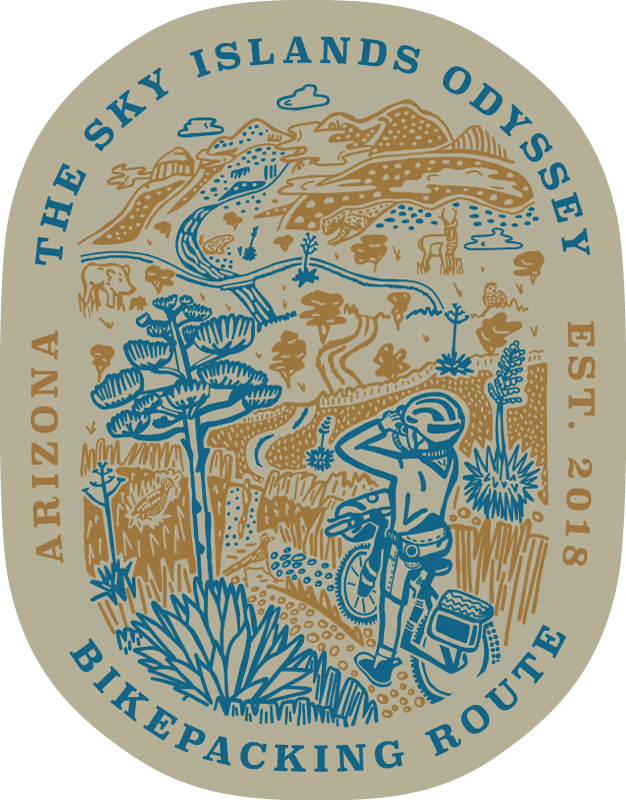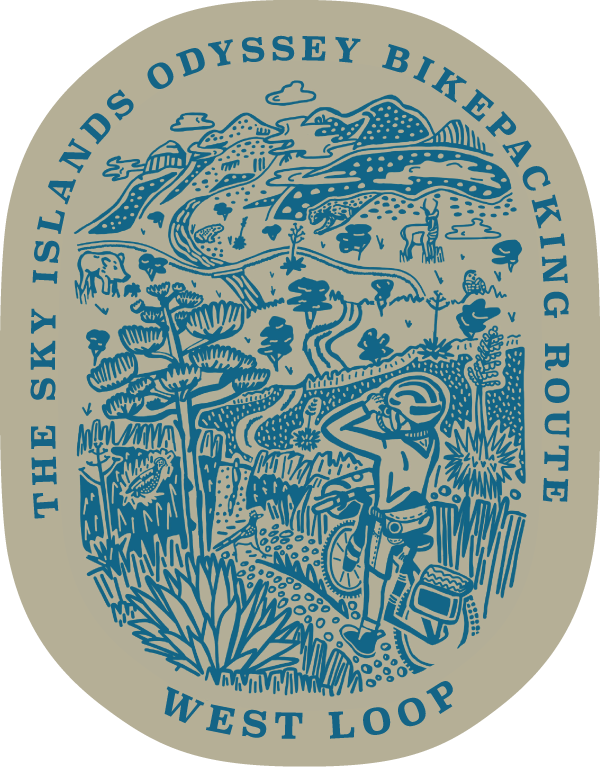This region has a long history of Spanish, Mexican, and American land colonization and human migration dating back to the late 1770s, when Spanish conquistadors used the region as an expedition route to colonize the indigenous lands of present day San Francisco and sequentially New Spain, which included much of the land in what is today the Western United States. Under the Mexican Cession in 1848, Arizona became a territory of the United States, spurring an influx of miners traveling west for the California Gold Rush to settle in the region. Today, this region continues to make history every day as border-crossing corridor at the center of debate of US immigration policies, border patrol, and a humanitarian crisis. While this aspect of the route may deter some, for others is offers a unique, humanizing perspective of a very current issue in U.S. history.
Ancestral Lands
The Sky Islands Odyssey routes travel through the ancestral lands of the Tohono O’odham, Chiricahua Apache, and Ópata. Baboquivari Peak, a significant visual landmark on the West Loop, Full Loop, and west side of the East Loop, is the most sacred place to the Tohono O’odham as it is the birthplace of their creator, I’itoi and the center of their cosmology. Tohono O’odham is pronounced, Thaw-(haw)-naw Awe-(awe)-thumb, or Thaw-naw Awe-thumb. Tohono means desert and O’odham means people. To this day, the Tohono O’odham Nation plays a significant, active, and essential role in state and federal politics and in protecting land, water, and human rights in southern Arizona. With approximately 36,000 enrolled members, and a reservation of more than 2.5 million acres of southern Arizona land (the size of the state of Connecticut), the Tohono O’odham Nation is the second largest indigenous land holding in the United States.
Megafauna
Fossils dating back to the Late Pleistocene Period prove that plant and animal communities were not the same as they are today. Remains of several large animals that are now extinct have been unearthed at several sites in the San Pedro River Valley and other places in Arizona and the Southwest.
During this period, the broad plains of the San Pedro River Valley teemed with larger herbivores such as camels, llamas, horses, mastodons, mammoths, and long-horned bison, as well as tapirs and ground sloths. These large animals were preyed upon by the dire wolf, jaguar, lion, cheetah, cougar, bear, and humans. Most of these large Ice Age mammals, collectively called megafauna by scientists, are now extinct.
Scientists do not fully understand why many megafauna species became extinct while others, such as the grizzly and black bear, cougar, elk, pronghorn, and wolf, survived this period. Human predation, climate, vegetation changes, or a combination of these factors may have caused such selective extinctions.
Human History
The first Homo sapiens appeared in North America in 10,000 BCE, following herds of big-game animals migrating from Asia across the Bering land bridge. They eventually made their way into every habitat on the North American continent.
Archeological evidence recovered from six sites in the San Pedro Valley, where Ice Age hunters killed mammoth and bison, indicates that people belonging to the Clovis culture were roaming southeastern Arizona at least 11,000 years ago.
The most commonly held perspective on the end of the Clovis culture is that a decline in the availability of megafauna, combined with an overall increase in a less mobile population, led to local differentiation of lithic and cultural traditions across the Americas.
The Clovis people were replaced by a succession of cultures such as the Cochise, Preceramic O’otam, the Formative O’otam (Pima), Hohokam, and the Sobaipuri dependent on small game, the gathering of seeds and nuts, and later, agriculture. Land occupancy of these groups overlapped with the arrival of Spanish explorers such as Fray Marcos de Niza, Francisco Vasquez de Coronado, Padre Eusebio Kino, and Captain Juan Mateo Manje.
Chiricahua Apache moved into the area east of the Santa Rita Mountains in approximately 1680 CE and had largely replaced the indigenous tribes by the end of the 17th century. The Apaches and their allies, plus the introduced disease, malaria, kept settlement by those of European descent at low levels until the 1870s.
Numerous archeological sites are recorded in the Arizona State Museum field surveys and the Amerindian Foundation for the upper San Pedro and Babocomari Drainages, as well as in the Santa Rita and Patagonia Mountains.
History of Domestic Livestock Grazing and Its Impact on the Land
The archeological record suggests that bison, North America’s principal large grazing mammal, were uncommon in southeast Arizona or perhaps missing altogether after the end of the last ice age. Spanish and Mexican colonizers slowly introduced the first large hoofed grazers throughout the seventeenth, eighteenth, and early nineteenth centuries. However, domestic livestock was not thought to impact the landscape under their rule significantly. The Gadsden Purchase of 1853/54 transferred ownership from Mexico to the United States, but relatively little changed regarding the management of the land until after the Civil War when the combined efforts of the American military and westward migration of Americans enabled the development of a large livestock industry.
A combination of factors, including ignorance of the climate and ecology of the region, led to a series of overgrazing events, as well as a period of severe drought in the late nineteenth and early twentieth centuries which resulted in the loss of topsoil, changes in hydrology, and the realization that grasslands of the Southwest present unique challenges to ranchers. Because these grasslands survived and evolved without the presence of native hoofed grazers for 10,000 years or more, they were unprepared for the introduction of domestic grazers at such a large scale. As a result, very arid grasslands in the Southwest were converted to desert scrublands by grazing and are permanently incapable of supporting grasses today.
Much of the modern management of the existing grassland prairies has sought to strike a balance between the economic necessities associated with ranching on a landscape with little or no natural defenses against grazing by domestic livestock.










